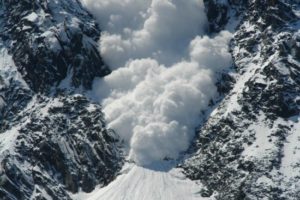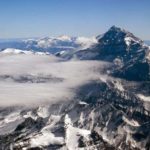Interesting facts about snow avalanches
 Descending from the mountain slopes, mighty avalanches crush everything in their path. Their appearance can not be foreseen, it is impossible to prevent, and all that remains is to try to protect them from them.
Descending from the mountain slopes, mighty avalanches crush everything in their path. Their appearance can not be foreseen, it is impossible to prevent, and all that remains is to try to protect them from them.
The most common reason for a snow avalanche is melting snow, when a layer of water forms between its main mass and the mountain slope. Then the snow mass loses its adhesion to the rock and rushes down.
The most powerful snow avalanches in the world occur in the Himalayas.
In 1970, in the country of Peru, a snow avalanche completely destroyed a small city and claimed the lives of thirty thousand people.
The speed of the avalanche sometimes reaches 300-350 kilometers per hour, that is, faster than racing cars of Formula-1.
The greatest damage occurs not because of the snow masses themselves, but because of the impact of the preceding air avalanche.
On average, about one hundred and fifty people die every year because of avalanches.
The amount of snow in one avalanche can reach several million cubic meters.
Specially trained dogs are really very helpful rescuers in search of people trapped in an avalanche.
Avalanches are dry and wet. Dry is more dangerous, since their speed is several times higher.
In the United States annually, about a hundred thousand avalanches fall.
One of the most avalanche-threatened settlements in the world is the small town of Juno located in Alaska.
The area of avalanche territories in Russia is more than three thousand square kilometers, that is, about 18 percent of the entire territory of the country.
On the Earth, about six percent of the land is considered to be avalanche areas.
Scientists have long been trying to learn how to predict the descending of avalanches, but the long-term forecasts are made for a maximum of a day or two ahead. The conditions for the descent of avalanches are formed too quickly in order to make longer-term forecasts.
The avalanche can “jump over” an obstacle, for example, a dam or gorge, and continue its journey.



























